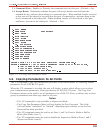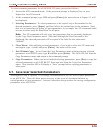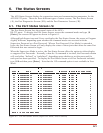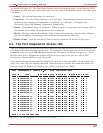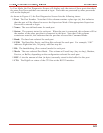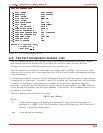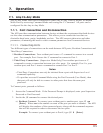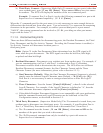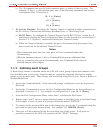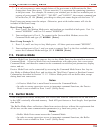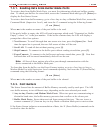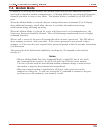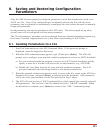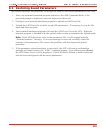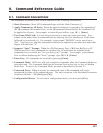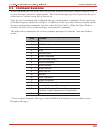
c) The /D command can specify both connected ports, or either of the two ports. For
example, if Port 1 is your resident port, any of the following commands can be used
to disconnect Port 3 from Port 4:
/D34[Enter]
or
/D 3 [Enter]
or
/D 4 [Enter]
3. No Activity Timeout: Providing the Timeout feature is enabled at either connected port,
the No Activity Timeout can disconnect Resident Ports, or Third Party Ports.
a) RS232 Ports: To configure the Timeout Feature for the RS232 Ports, invoke the /P
command to display the Port Configuration Menu for the desired port as described in
Section 5.5.3. Option 11 enables and defines the Timeout Feature.
b) When the Timeout Feature is enabled, the port will automatically disconnect if no
data is received for the defined Timeout Period.
Notes:
•
When connected ports time out, both ports will exit command mode after
disconnecting.
• When an unconnected port is left in Command Mode and no additional data
activity is detected, the port will automatically exit Command Mode when its
defined timeout value elapses.
7.1.2. Defining Hunt Groups
A Hunt Group creates a situation where the APS will scan a group of ports and connect to the
first available port in the group. Hunt Groups are created by assigning identical or similar
names to two or more ports. Hunt Groups can be defined using Any-to-Any, Passive, Buffer, or
Modem Mode Ports.
1. Access the Command Mode. If the password prompt is displayed, enter the Supervisor
Password.
2. Invoke the /P command to access the Port Configuration Menu for the desired Port(s) as
described in Section 5.5.3. For example, to configure Port 4, type /P 4 [Enter].
3. From the Port Configuration Menu, select item 1 to define the Port Name.
4. Repeat steps 2 and 3 above to assign identical names to the other ports in the Hunt Group.
For example, a series of ports in a group could all be named "SERVER".
5. To connect to the next available port in the hunt group, invoke the /C command using the
port name to specify the desired group. For example, /C SERVER [Enter].
6. Your port will be connected to the first available port in the group. If all ports are
presently connected, the APS will respond with the "BUSY" message.
7-3



